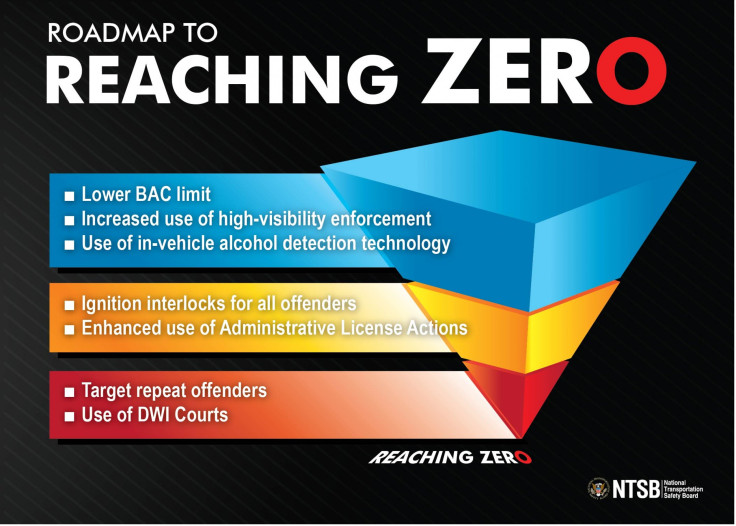NTSB Recommends New Drunk Driving Limit Of .05 BAC

The National Transportation Safety Board voted on Tuesday to recommend that all states adopt a stricter drunk driving limit of .05 percent blood alcohol content (BAC). Currently, it is legal to drive with a BAC under .08 percent in all U.S. states.
According to the NTSB’s new “Reaching Zero” program, drivers are still significantly impaired even with a BAC of .05 percent, which can lead to fatal car crashes even if the driver is under the current legal limit.
“The research clearly shows that drivers with a BAC above 0.05 are impaired and at a significantly greater risk of being involved in a crash where someone is killed or injured,” NTSB Chairman Deborah A. P. Hersman said in a video statement. “Our goal is to get to zero deaths, because each alcohol-impaired death is preventable. They are crimes. They can and should be prevented. The tools exist. What is needed is the will.”
Currently, the average adult is legally capable of driving after a small amount of alcohol, but the new NTSB suggestions would severely limit the amount an adult consumes.
Under the NTSB’s drunk driving limit of .05 percent, the average 160-pound adult would be unable to legally operate a motor vehicle after consuming the previously legal alcoholic equivalent of two beers or a single martini.
The new .05 percent limit may sound extremely low to some people, but that’s only because America has stuck with the .08 percent limit for so long. As the NTSB states, most nations in the world have already switched to a stricter drunk driving limit.
The United States, Canada and Iraq are some of the only countries in the world still using the .08 percent limit, as the majority of European, South American and Asian countries have already switched to the lower .05 percent limit.
NBC News reports that after Australia switched from a .08 percent limit to .05 percent, the country saw a 5-18 percent drop in traffic fatalities.
While the NTSB has no federal authority to impose the new limit, it can strongly recommend state legislatures to adopt the new limit. The board is extremely influential in the creation of statewide policies, and the NTSB’s Reaching Zero campaign may lead to some states adopting the lower .05 percent limit.
Still, despite the numbers provided by the NTSB, alcohol industry lobbyists are strongly against legislation for a stricter drunk driving limit.
Sarah Longwell of the American Beverage Institute has already condemned the push for a stricter drunk driving limit as “terrible.”
“Between .05 and .08 is not where fatalities are occurring. This is like, people are driving through an intersection at 90 miles an hour and so you drop the speed limit from 35 to 25, it doesn’t make any sense,” Longwell told the Washington Post. “This is something that is going to have a tremendously negative impact on the hospitality industry while not having a positive impact on road safety.”
Longwell also stated that the average BAC in alcohol-related driving deaths is .16 percent, claiming that the vast majority of alcohol-related deaths do not occur between the .05-.08 percent range.
Other objectives in the NTSB’s “Reaching Zero” campaign include the development of in-vehicle alcohol detection technology and the specific targeting of repeat drunk driving offenders.
Watch NTSB Chairman Deborah A. P. Hersman discuss the Reaching Zero program below.
© Copyright IBTimes 2024. All rights reserved.











